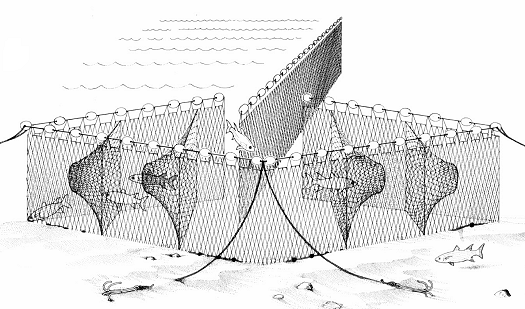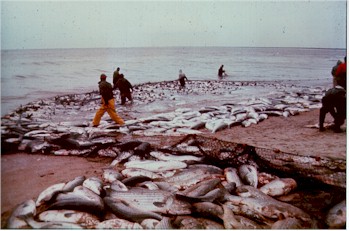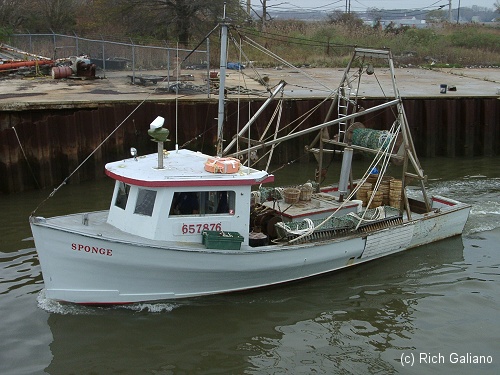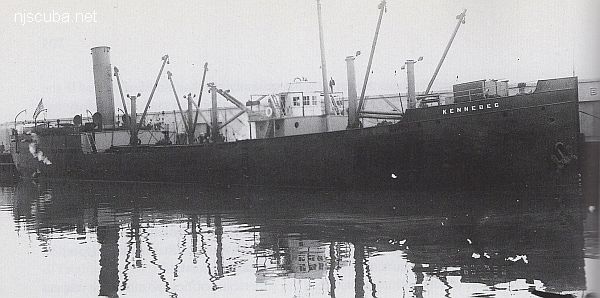Fish Traps

Fish traps are only practical in shallow water. They have the advantage of keeping both the targeted catch and the bycatch alive ( unless a shark gets in ! ) You can still see a few fish traps in use in Raritan Bay, where they are built around fixed pilings rather than buoys and anchors as shown here. In years past, shore-based trawling or "haul seining" was also practiced in the bay, where a net would be deployed off the beach by a small boat, and drawn in by donkeys or trucks.

Haul Seining
An estimated 50 tons of spawning Striped Bass is taken in a single net on a Virginia beach in 1972. This type of fishing would be completely illegal today.
The main fishery in Raritan Bay has always been Mossbunker.
A similar type of fixed fish trap is the gill net, which uses a specific-size mesh to trap a certain size of fish. When the fish tries to swim through the net, only its head fits. Then when it tries to back away, it becomes ensnared by its gill covers. This kind of gill netting is fairly specific, as smaller fish pass through the net unharmed, and bigger ones don't get caught in the mesh. A terrible variation of this is drift-netting, described above.


